The printing techniques that every graphic designer must know
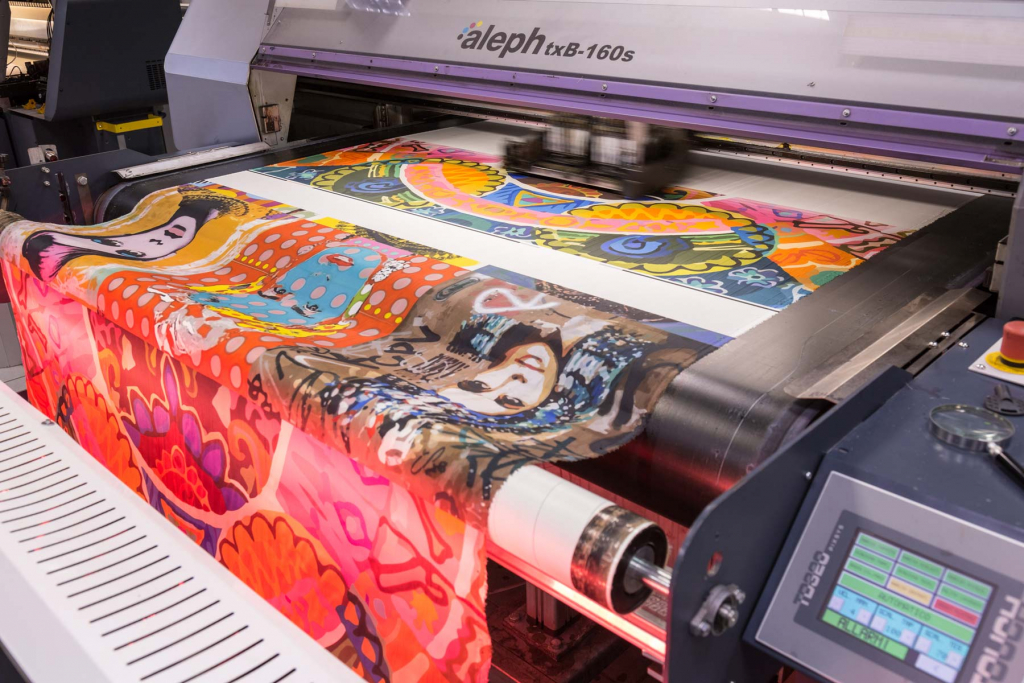
A large portion of graphic design projects go through a print stage . There is a great variety of printing techniques , which are also very different in terms of technology and results.
Understanding how they work can certainly help you to tackle your projects better, because it allows you to predict not only the final visual effect but also which technique will be preferred in terms of cost and feasibility.
This is why I thought of writing an article in which I explain in detail what the main printing techniques are and how they work.
Offset printing
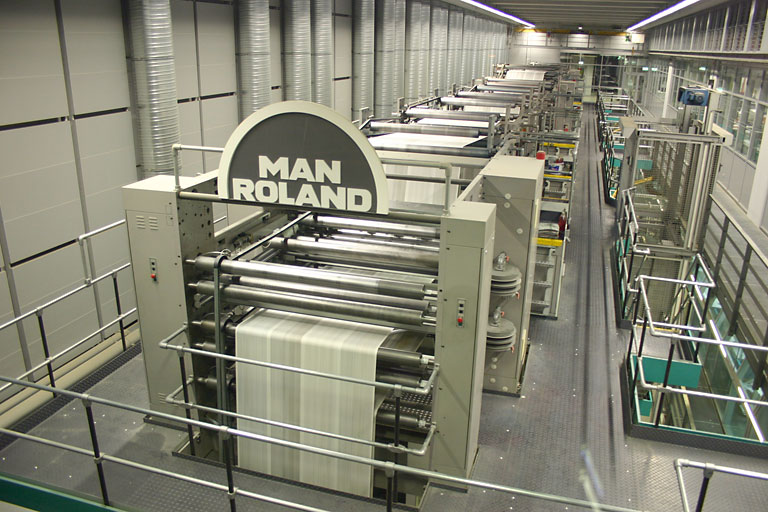 Offset printing machine
Offset printing machine
Offset printing is so called because in this process the ink is not transferred directly from the printing plate onto the surface to be printed, such as the sheet, but passes through a silicone roller.
Offset printing derives from lithography : they are both planographic techniques . This means that the parts without ink and those that need to be inked are on the same plane, on the same level as a flat matrix.
How does it work
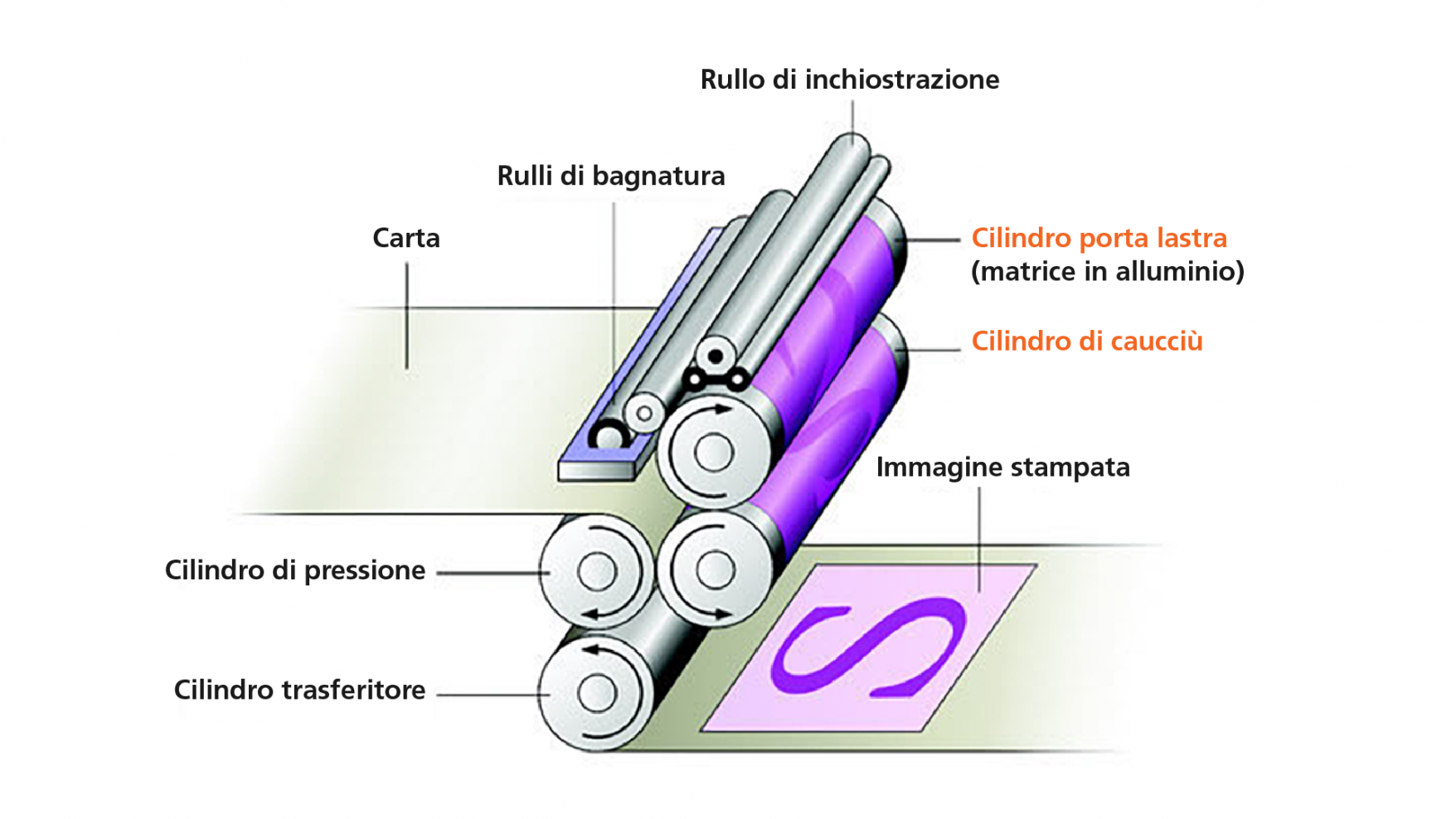 Diagram of how offset printing works
Diagram of how offset printing works
In offset printing an aluminum sheet is used as a matrix ; this is wetted with water-based inks, which set well on untreated aluminum.
The parts that must remain "saving" are treated with water-repellent substances. This procedure allows a very high quality and definition of print. As we have mentioned, it is an indirect printing technique: in fact, the ink which has been deposited on the matrix is first transferred onto a rubber roller.
The rubber roller in turn is then pressed onto the paper, or any material to be printed.
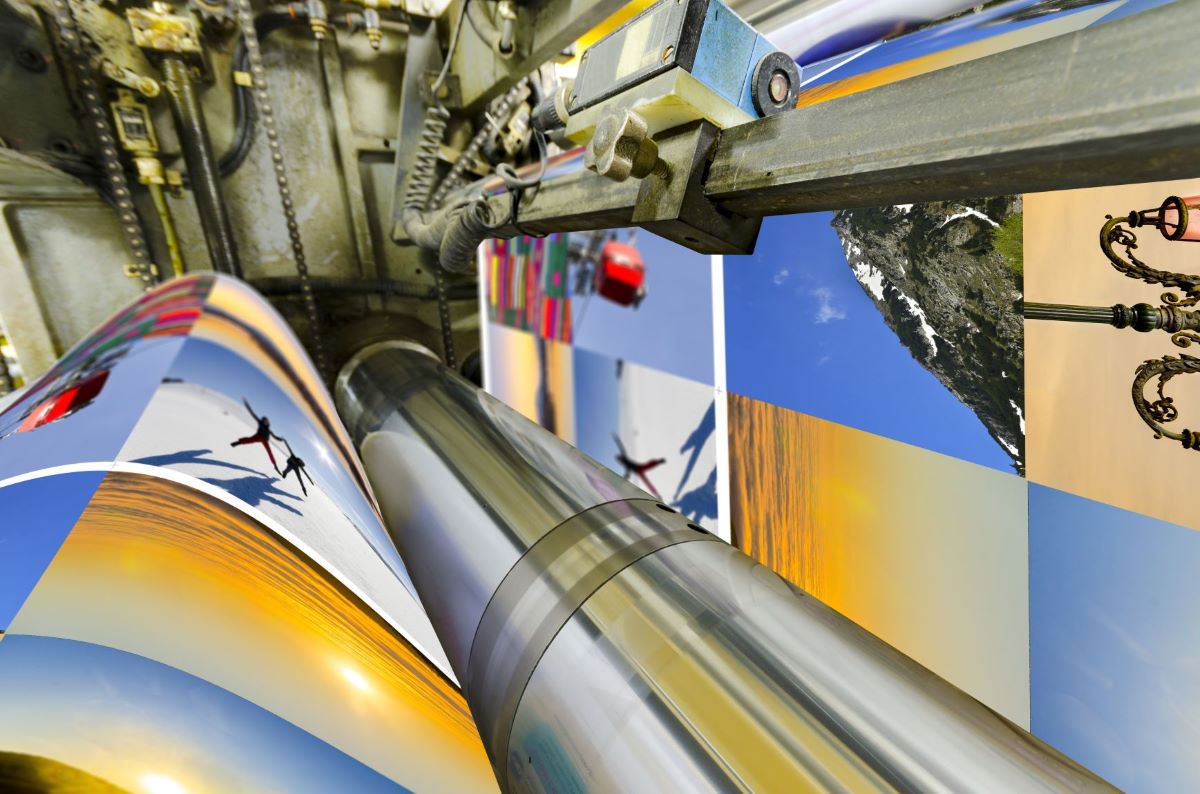 Offset printing rolls
Offset printing rolls
Although it appears more complicated than direct printing techniques, this procedure allows, in addition to the precision we have already talked about, also an excellent yield on delicate materials , because it avoids direct contact with the aluminum plate.
Offset printing is therefore carried out using a rather complex machine , decidedly industrial in nature , made up of various rollers: the inking one, one with an aluminum matrix, a rubber one and another which presses the sheet against the latter.
This actually makes it possible to integrate subsequent processing of the sheet into the print, such as cutting and folding . This is why offset printing is used very frequently for large and very large runs .
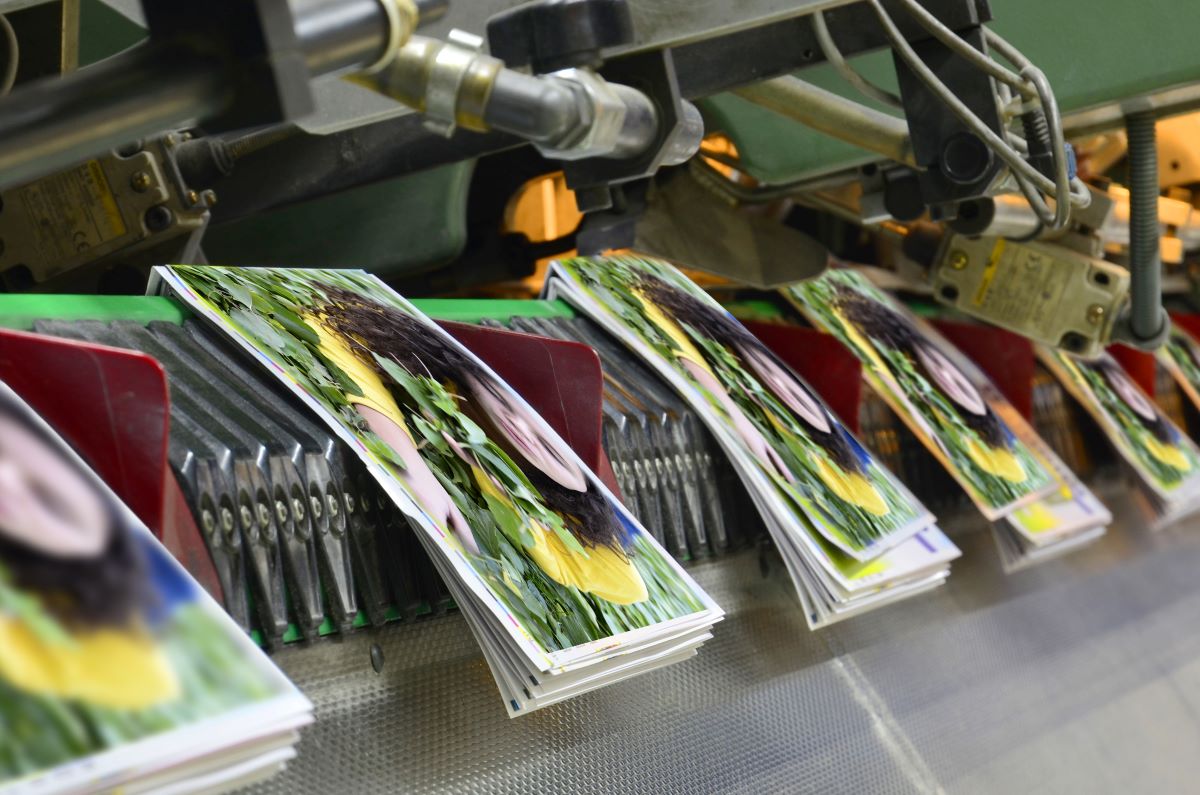 Example of subsequent processing in the offset printing cycle: folding and perfect binding.
Example of subsequent processing in the offset printing cycle: folding and perfect binding.
Types of offset printing
There are two types of offset printing, depending on how the print is fed:
- Offset-flatbed printing
- Roto-offset printing
In the first one, single sheets are used as a loading method, in the second one a reel of paper tape.
Single-sheet printing (offset-flatbed) guarantees higher quality, at a higher cost .
The reel- fed one, on the other hand, is useful for products where quality is not a priority factor , such as flyers, but the cost is lower .
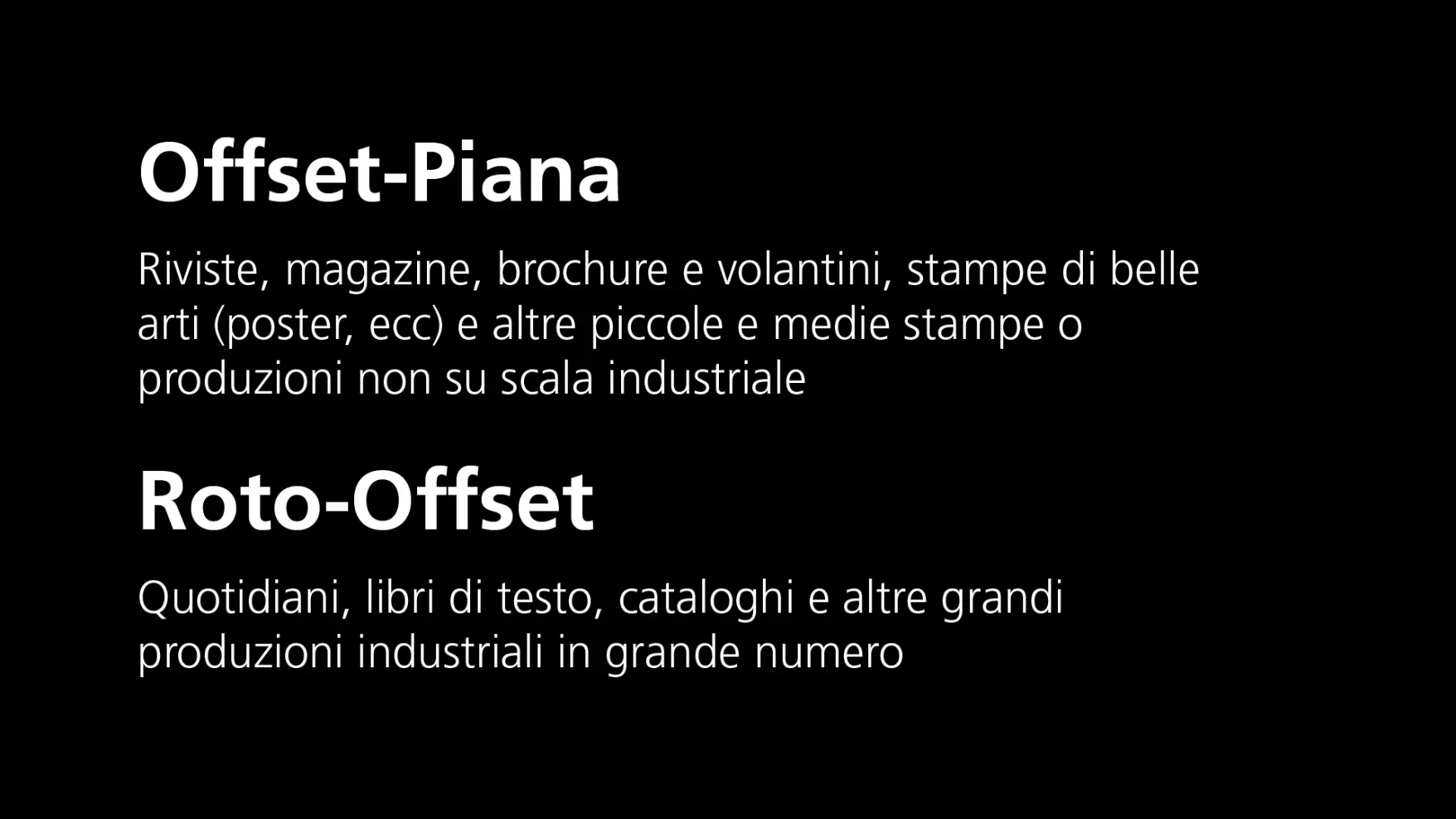 Difference flat offset and roto offset.
Difference flat offset and roto offset.
Advantages and disadvantages of offset printing
So what are the advantages of offset printing?
Certainly the absolute precision , characteristic of the planographic technique. Accuracy which, among other things, is maintained even with large print runs, since the aluminum plate comes into contact only with the rubber roller, therefore it is not damaged by use.
Furthermore, as already mentioned, it is a technique that adapts very well to delicate materials or with particular textures .
It is usually printed in CMYK four-colour process , but different gamuts can also be used, such as Pantone .
And the disadvantages ?
A large amount of ink cannot be used . Since it is an aqueous ink, an excessive amount could wet the sheet.
Furthermore, it is still a printing technique that requires the creation of a matrix for each project . This therefore makes it particularly suitable for large runs.
It is therefore convenient (generally) above 10,000 copies .
The projects that are best suited to this technique are small publications, flyers, brochures .
Letterpress printing
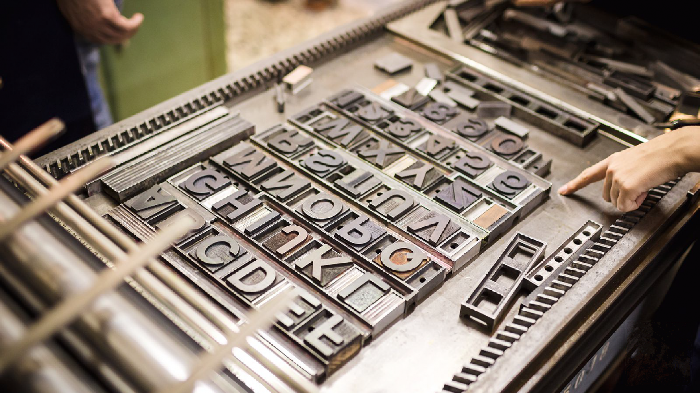
The letterpress closest to the origins. This technique is still today in all respects similar to the movable type printing introduced by Gutenberg in the mid-fifteenth century, the one that gave rise to the modern concept of font .
It is therefore a plane matrix in relief : this relief can be obtained precisely by inserting on a support some metal blocks bearing shapes, mostly letters, in relief. Or, today, the clichés, i.e. the matrices, in galvanized metal or photopolymers, can be engraved to obtain the positive relief of the graphics to be printed.
The matrix is inked and on it the machine presses the sheet to be printed .
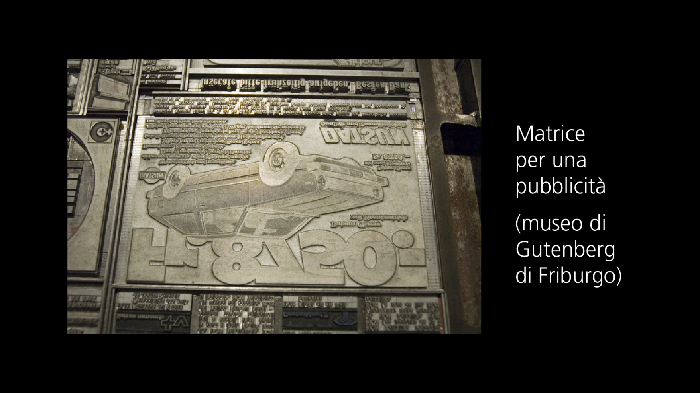
The greatest value of letterpress printing lies in this pressure . Especially in combination with precious papers , with a high content of cotton fibres, in fact, typographic printing guarantees an unmistakable material effect .
Characters and signs are not only defined thanks to the ink, but almost engraved in the printed sheet. This guarantees a multisensory effect to the finished product.
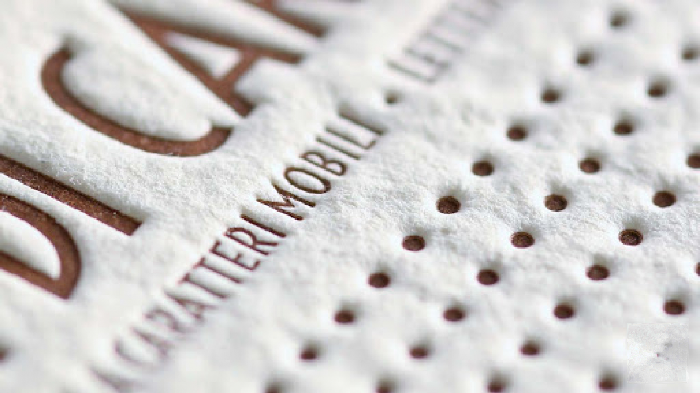
This is obviously a rather slow and expensive process , which also requires a valuable support to be exploited to the fullest.
This printing technique is the right one if your project aims for a refined and precious result . It is often chosen for menus, invitations, but it is also of great impact for business cards.
Digital print
It is certainly the printing technique with which we all have to deal more often today. And, thanks to recent innovations, perhaps also the most flexible.
From our home printers to office copiers to print-on-demand sites, it all falls under the great family of digital printing techniques .
Digital printing does not require any matrix . This is why it is the best technique for any project that requires very small runs , or even customized products .
Within this macro-category, there are two types of digital printing technique, based on the type of ink used:
- Toner printing
- Inkjet printing.
Digital toner printing
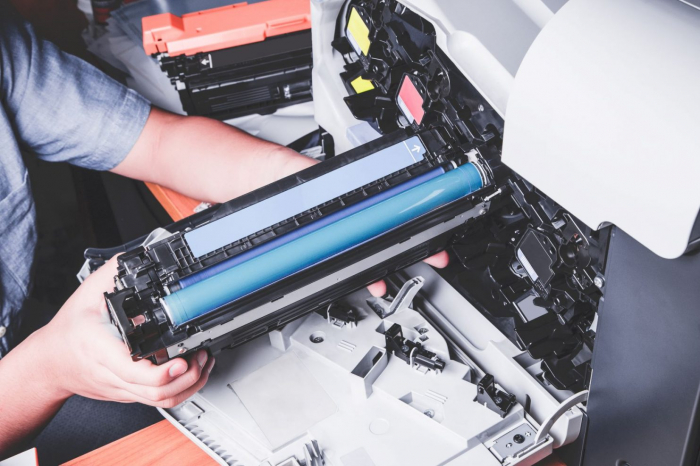
This technology is based on the use of powder ink . This dust is attracted by electrostatic rollers or by the laser beam, and therefore settles on the paper, or on other surfaces (fabric, pvc, plexiglass, to name a few). At this point the toner is fixed with a heat treatment.
It is a versatile technique and for this reason used for purposes and with very different levels of quality: from printing bills to office photocopiers, up to professional prints of a quality now comparable to offset prints , especially if we are talking about laser.
Obviously, when the quality is very high, the price also goes up. Therefore, in order to have digital toner printing that is competitive with offset printing, the minimum quantity of copies of the product to be made is approximately 500 pieces .
This technology, capable of offering good results at reasonable prices even for small or very small runs , is now by far the most widespread. It has been able to open up new market sectors: personalized t-shirt printing, for example, or all the print-on-demand sites that operate online and which have now become part of our habits.
A limitation of this technique to be taken into account is the poor resistance to chemical solvents : since the ink is not absorbed by the paper, or in any case by the support, it is more sensitive to some substances and it is therefore preferable to avoid this technique for products which may come into contact with solvents.
Inkjet digital printing
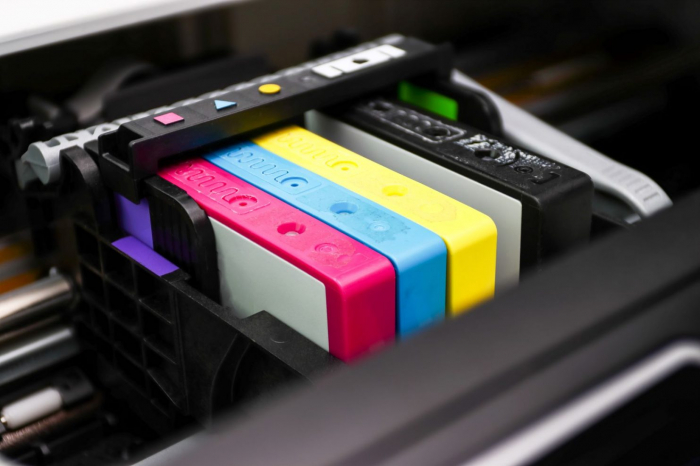
This technology uses liquid ink , which is released by a head that moves over the surface to be printed.
Inkjet machines are quite noisy and above all slow , a feature that makes this type of printing rather expensive.
However, the results, especially if we are talking about industrial printers, are of very high quality and it is possible to create very large products with inkjet, which is impossible to obtain with other printing techniques.
It therefore adapts perfectly to products to be made in very short runs, a few copies or even single copies, which however require a considerable quality and perhaps have larger than standard dimensions.
Screen printing
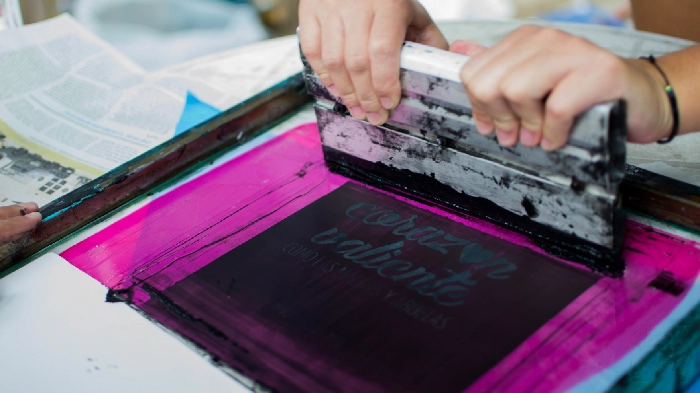
It is one of the oldest printing techniques and is defined as permeographic printing : it means that the ink filters through a permeable material, in particular a fabric
The name "serigrafia" derives in fact from the Latin "sericum" ("silk") and from the Greek "γράφειν" ("gràphein", "to write"): the first fabrics thanks to which screen printing was carried out were, in fact, in silk .
Even today, screen printing is obtained thanks to a fabric , often in polyester, which is stretched over a wooden or metal frame . This way we get the matrix .
Therefore the saving parts, those where the ink must not pass, are treated with photoemulsions which make the fabric waterproof. The frame is then placed on the printing support and inked: the ink passes through the fabric in the points where it has not been treated and is deposited correctly on the printing area.
With this procedure it is possible to print only one color at a time , and for each color it is necessary to create a special matrix.
It is therefore a very expensive technique for short runs, which is instead more suitable when we have to print products in a large number of copies.
Why choose screen printing?
Screen printing is the only technology that allows you to choose which thickness of ink you want to obtain, and for this reason it is the most used in the field of industrial decoration.
Not only that, it is the only one that allows you to use a huge variety of inks : glossy, opaque, glitter, metallic, iridescent, iridescent, luminescent, thermochromic, photochromic, retroreflective, soft-touch.
It can also be used on a huge variety of substrates, such as bicycles and helmets, shoes, bags, outdoor awnings, decorative panels in plastic laminate.
It remains the technique of choice for printing on fabric . It is in fact used a lot for printing graphics on high-volume T-shirts (not print-on-demand , therefore, where digital printing is used).
The only material for which screen printing is rarely used is paper; for paper prints, in fact, offset and digital printing are far more practical and economical.
When you subscribe to the blog, we will send you an e-mail when there are new updates on the site so you wouldn't miss them.
By accepting you will be accessing a service provided by a third-party external to https://www.insightadv.it/


































































Comments